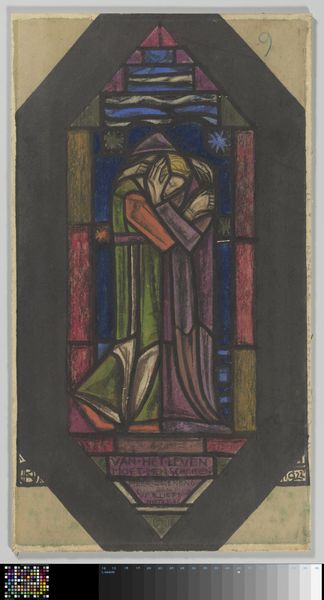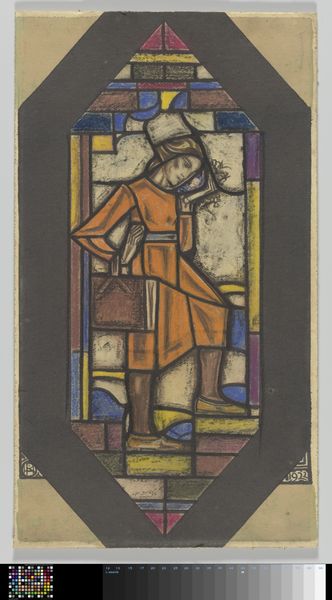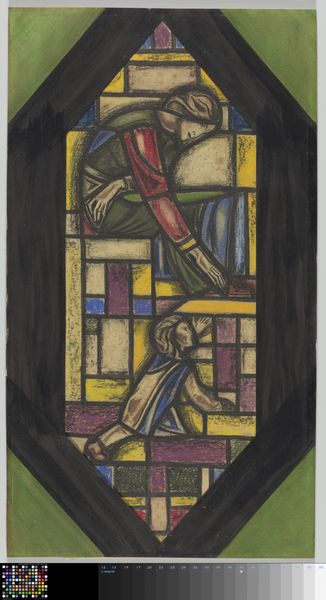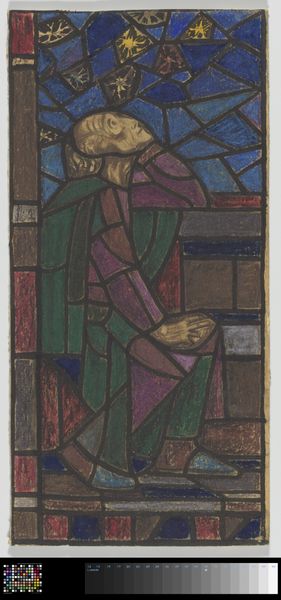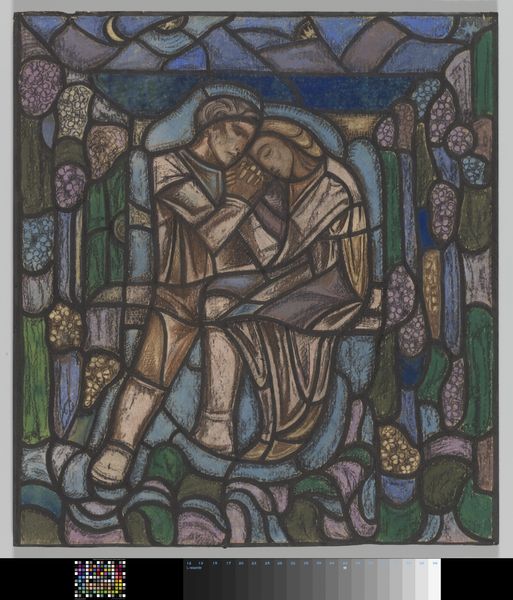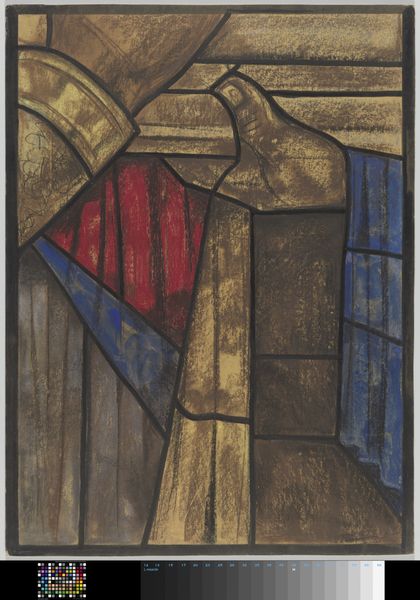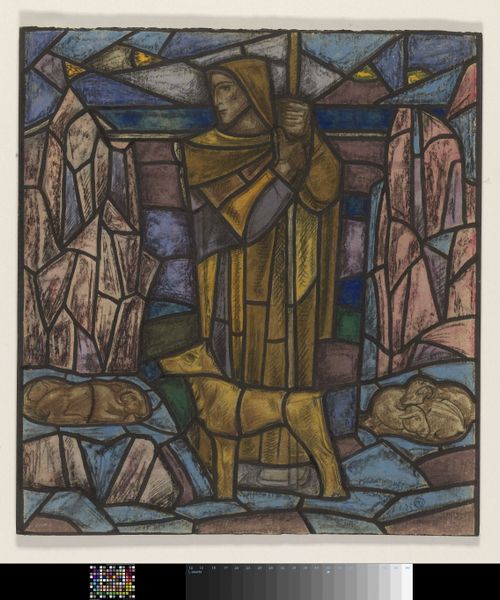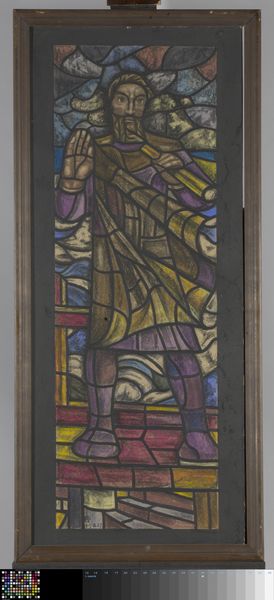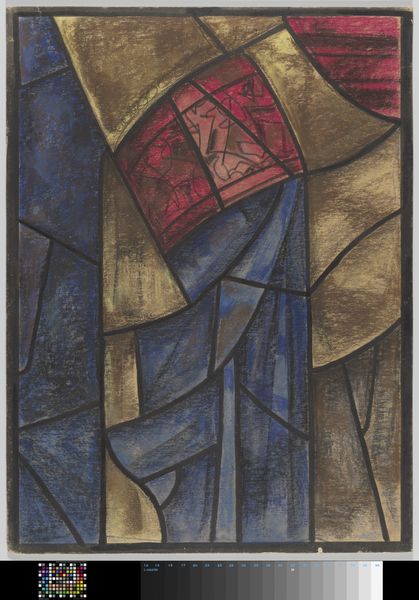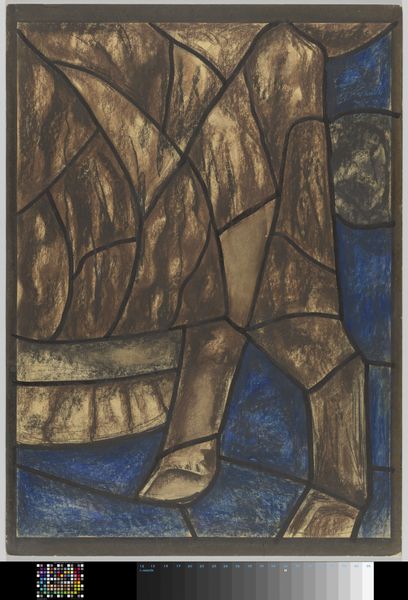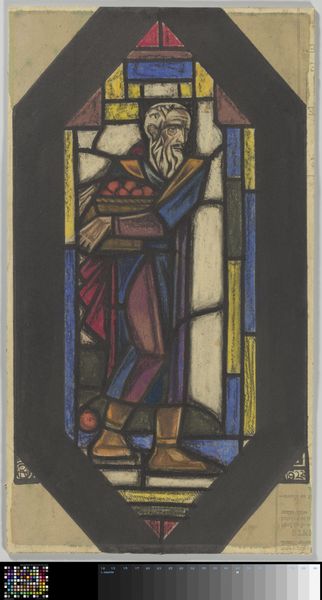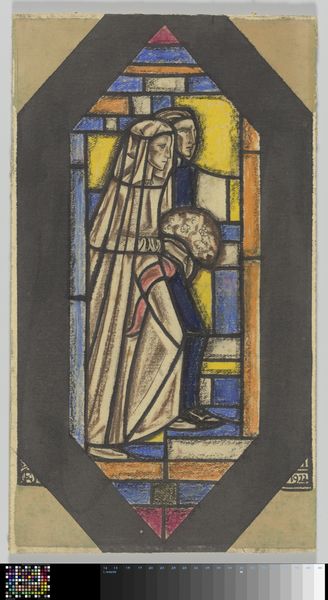
Ontwerp voor raam in het Nederlands Paviljoen op de tentoonstelling Arts Décoratifs te Parijs, 1925 1925
0:00
0:00
richardnicolausrolandholst
Rijksmuseum
drawing, mixed-media, paper, ink, pencil
#
portrait
#
art-deco
#
drawing
#
mixed-media
#
toned paper
#
narrative-art
#
paper
#
ink
#
pencil
Dimensions: height 555 mm, width 415 mm
Copyright: Rijks Museum: Open Domain
Curator: Richard Nicolaüs Roland Holst's mixed-media design for a window in the Dutch Pavilion at the 1925 Arts Décoratifs exhibition in Paris, quite a mouthful, I know! Editor: It evokes a sense of melancholic domesticity. There's something both tender and vaguely unsettling about the figure of the mother and child enclosed within this rigid, almost architectural framework. Curator: The artwork certainly captures that period. The figure's stylization and the geometric arrangement speak volumes about Art Deco's influence. The artist rendered this drawing with ink and pencil on toned paper, almost like a preparatory sketch. Editor: The choice of medium really underscores that feeling of fragility. You get a sense that it’s an early idea, raw, unfiltered. Thinking about the historical moment, it is interesting to contemplate how the idea of 'motherhood' intersects with broader narratives around nationhood and representation in the 1920s. What is it meant to convey here? Curator: Given Holst's background, it likely represents a idealized, even nostalgic view. I wonder if that almost stony presentation, her weary but somehow dignified pose and faraway stare suggests something deeper than a surface-level celebration of family values. It does feel strangely distanced, which, when juxtaposed with the obviously intimate moment, suggests a broader allegory is afoot. Editor: Right. We could definitely situate the work in its context – after the first World War when people had lost a lot, the idea of going back to basic family values seemed like the only way for most Western societies to recover from their trauma and heavy losses. However, the gaze she projects is so vacant that one starts wondering if the artist sees this imposed image of the mother as a sign of something lacking and oppressive at the same time. Curator: So perhaps this initial feeling that I have—as a window looking onto the past that is more layered and strange than is immediately apparent—makes sense? Editor: Precisely. Roland Holst might be more subversive than we initially think, challenging conventions through the guise of tradition. The starkness also reveals much. Curator: A perfect lens, literally, through which to view the complex cultural narratives of its time. Thank you for bringing that historical analysis to my emotional responses. Editor: Likewise.
Comments
No comments
Be the first to comment and join the conversation on the ultimate creative platform.
